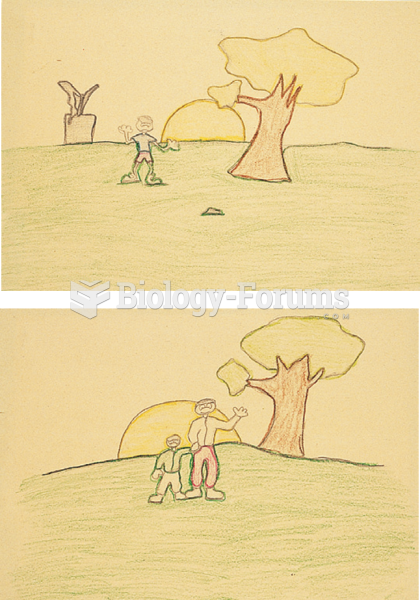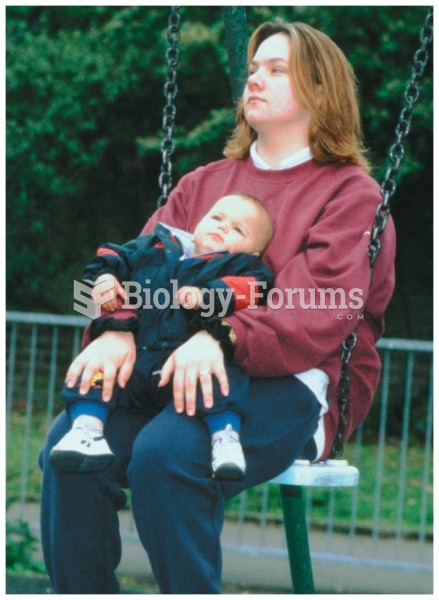|
|
|
Oliver Wendell Holmes is credited with introducing the words "anesthesia" and "anesthetic" into the English language in 1846.
The calories found in one piece of cherry cheesecake could light a 60-watt light bulb for 1.5 hours.
Certain chemicals, after ingestion, can be converted by the body into cyanide. Most of these chemicals have been removed from the market, but some old nail polish remover, solvents, and plastics manufacturing solutions can contain these substances.
You should not take more than 1,000 mg of vitamin E per day. Doses above this amount increase the risk of bleeding problems that can lead to a stroke.
Chronic marijuana use can damage the white blood cells and reduce the immune system's ability to respond to disease by as much as 40%. Without a strong immune system, the body is vulnerable to all kinds of degenerative and infectious diseases.
 School-age children are often independent and industrious, with a developing sense of self-confidenc
School-age children are often independent and industrious, with a developing sense of self-confidenc
 One target for expanding medical services involves vaccinations. Only 78 percent of children ages 19 ...
One target for expanding medical services involves vaccinations. Only 78 percent of children ages 19 ...





